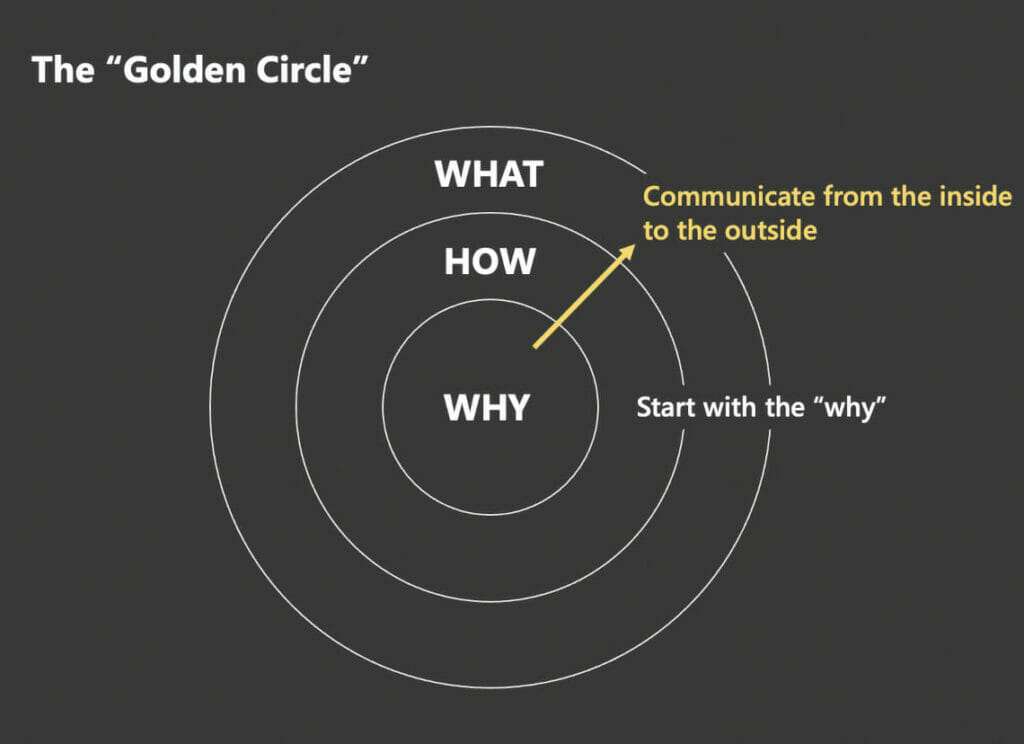
Start with “why” in PowerPoint presentations!
In most cases, TED-talks are very well received by the audience and manage to inspire them. At the same time, TED Talks convey important information in a short frame of time and connect with the audience on a personal level.
To present a good TED-talk there are several things that need to be considered. Most successful TED-talks in recent years usually had one thing in common. They started with asking the “why” question.
Simon Sinek – “Start with Why”
Simon Sinek, an American author, laid the foundation for this principle in his book “Start with Why”. This book is not only helpful for TED-talks, but if you are unsure about how to approach your next presentation, it can be helpful, too.
Because whilst the principle of starting with the “why” question works well for TED-talks, it works just as well for presentations and other talks.
In his book, Sinek describes a pattern and claims that successful people always think, communicate and act in a similar way. Often, however, this approach is the opposite of what many companies do.
The “Golden Circle”
The “Golden Circle” comes in handy to explain why it makes sense to start with the “Why” and then work through further questions.
The circle describes a communication process that starts on the inside, explaining the “why” and then moving further outside to explain the “how” and the “what”.

- The “Why”
Very few companies know exactly why they do what they do. The “why” cannot be answered with words as simple as “sales” or “revenue”. It is about a deeper reason why the company exists.
- The “How”
To answer the “how”, a company needs to know what sets it apart from competitors and what exactly makes it special.
- The “What”
The “what” is easier to answer than the two previous questions. What a company does should be obvious and is made up of the products or services the company offers.
Conclusion: Convince your audience with the Golden Circle!
Incorporate the “Golden Circle” into your next talk and convince your audience that your company is better than the competitors.
Do you have questions about TED Talks or PowerPoint in general? Do not hesitate to contact us at [email protected], we will be happy to help you!
Further articles, that you might be interested in:




